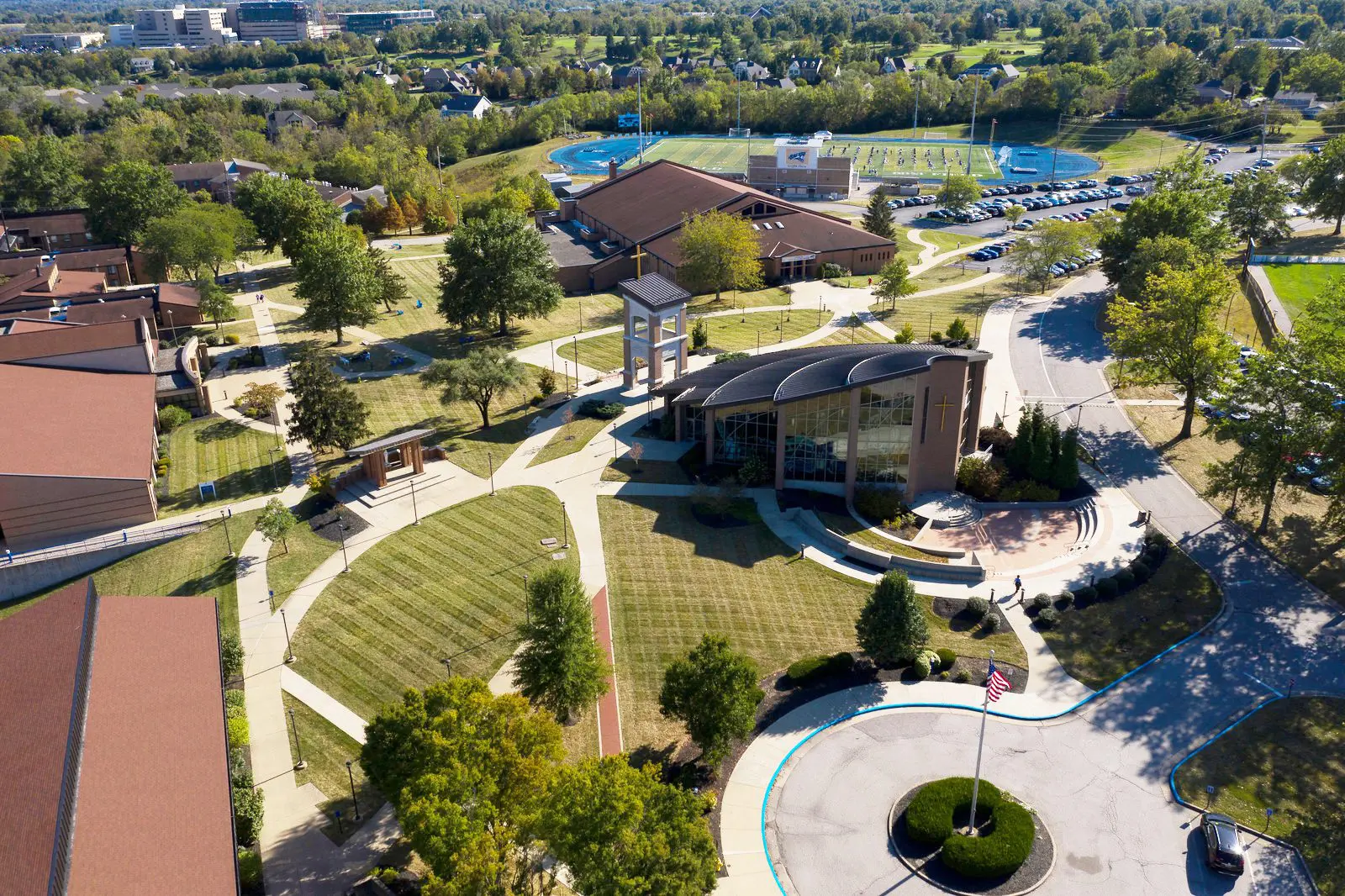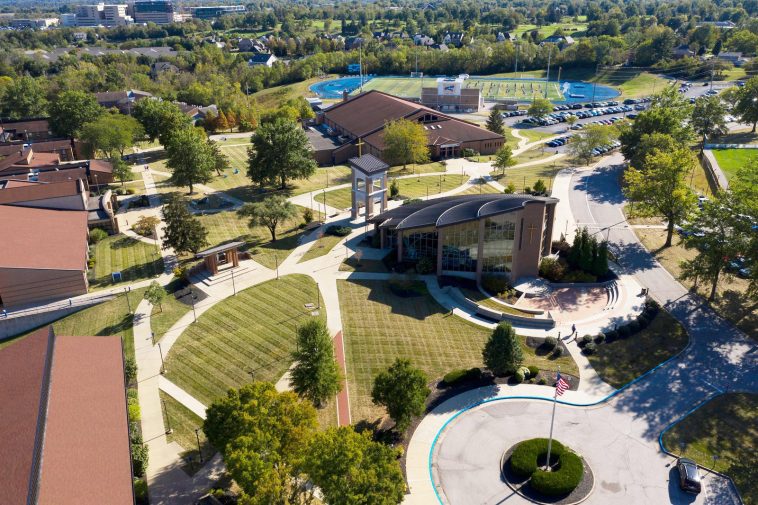
Reimagining Campus Safety and Community Care in Higher Education
In today’s fast-changing world of higher education, ensuring that students, faculty, and visitors enjoy a safe and welcoming environment is more essential than ever. At institutions like Thomas More University, campus safety is not just about rules and enforcement—it’s about building a community that cares, supports, and understands the twisted, sometimes intimidating layers of modern academic life. As an online education journal editor with expert knowledge of elementary and higher education, I’d like to share an opinion on how public safety services, academic resources, and support systems come together to create a nurturing space for learning and growth.
While many of us focus on the classroom and the curriculum, it is equally important to appreciate the behind-the-scenes work of departments like the Public Safety unit. Many might think of such services merely as a stock list of phone numbers or an inflexible set of protocols. However, a closer look reveals not only a robust network of emergency response and preventative care but also an institution’s commitment to ensuring that every member of the community feels secure and empowered.
Understanding the Role of University Public Safety Services
The Department of Public Safety at Thomas More University is stationed on the first floor of the Saints Center, serving as a focal point for security and emergency response. This is no small feat in today’s landscape where the public safety sector at a college often has to deal with a range of tricky parts such as navigating confusing bits of regulations, managing emergency situations, and offering educational programs that help the community steer through potentially nerve-racking scenarios.
The department’s mission, as outlined on the official website, emphasizes round-the-clock vigilance. With staff on duty 24 hours a day, 7 days a week, it works to provide not only prompt emergency services, but also to educate the community on key safety practices. This dual role—responding to issues as they occur and proactively preparing for emergencies—makes it a critical, must-have service within the academic framework.
Comprehensive Emergency Response and Support
One of the first aspects to consider is the scope of services provided. Public safety on campus goes beyond simply answering phone calls in a crisis. Key functions include:
- Responding to medical emergencies
- Conducting fire safety drills
- Investigating traffic and accident reports
- Providing crime prevention education and patrol services
This extensive list illustrates that the public safety department is involved in navigating the many subtle details that make up a safe campus environment. During late-night study sessions or early morning classes, students and staff can feel reassured knowing that trained professionals are available to assist at a moment’s notice.
Establishing a Safe Campus Culture
A safe learning environment isn’t built solely on rules; it’s constructed by actively engaging with and supporting the entire campus community. That’s why initiatives such as emergency planning, public safety education, and outreach programs are so important. By investing in these areas, institutions work to demystify the often intimidating aspects of campus safety.
For example, campus tours and safety briefings help new students figure a path through the often winding corridors of university life. Even casual mentions of safety statistics and crime reports can help alleviate worries, converting nerve-racking reports into useful, digestible information. Institutions are increasingly finding that a proactive approach fosters a sense of shared responsibility, enabling everyone on campus to contribute to a secure atmosphere.
The Intersection of Academic Excellence and Campus Safety
While the focus on academic achievement is well established, it’s equally important to link these educational goals to the quality of campus facilities and safety resources. After all, even the best educational programs cannot thrive in an environment that feels off-putting or unsafe. A secure campus is critical in fostering an atmosphere that is conducive to study, creativity, and innovation.
Consider the role of academic advising, library resources, athletic facilities, and housing services. These are often supported by comprehensive safety protocols that ensure each space is secure. Educational leaders are increasingly recognizing that all of these components—academic and operational—must coalesce to create an environment where learning can flourish.
Creating Synergy Between Services
A successful academic institution is a place where learning and safety are inextricably linked. This is evident when safety departments work hand in hand with academic offices. Such synergy includes:
- Coordinated emergency response drills in both classroom buildings and residence halls
- Collaborative planning between public safety and student services teams for community outreach events
- Shared training sessions that empower staff and students to recognize potential hazards
- Regular updates and workshops that cover tricky parts of campus emergency procedures
In combining strengths, Thomas More University demonstrates that each element—from academic advising to safety protocols—plays a role in nurturing a dynamic and secure learning environment.
Policy Compliance and Transparent Communication
Part of ensuring a safe campus is a clear communication strategy paired with transparent policies. Institutions like Thomas More University frequently operate under state and federal guidelines, requiring rigorous oversight and standards. Ensuring student and staff compliance involves not only policy dissemination but also creating an atmosphere where everyone understands the little details involved in safety protocols.
Transparency in policy, when paired with open channels of communication, helps the community appreciate the efforts and dedication behind every safety measure. Regular updates, accessible online resources, and informative campus maps all contribute to demystifying potentially intimidating procedures. This open-door policy is vital in reducing the nerve-wracking twists and turns that come with sudden emergencies.
Bridging the Gap Between Policy and Practice
Getting into the fine points of campus safety policy can sometimes seem like a maze of complicated pieces—especially for newcomers unfamiliar with the system. However, Thomas More University has set an example by ensuring that safety initiatives are showcased on its website through clear, easy-to-navigate sections. Here are some examples of how practical policy can be:
| Policy Area | Purpose | Community Benefit |
|---|---|---|
| Emergency Response | To provide immediate assistance in crises | Quick and efficient help during emergencies |
| Crime Prevention | Educate and protect against potential criminal activities | Reduced instances of theft or violence |
| Public Safety Education | Offer training and resources to all members | Empowered community capable of self-help |
| Traffic and Accident Reports | Monitor and respond to roadway incidents | Safer campus transit and reduced accident rates |
This table is a simple illustration of how fine shades of policy design deliver an overall benefit to the entire community. Instead of grappling with mysterious policy statements, all stakeholders are provided with crystal-clear guidelines that help them manage their way through the sometimes confusing parts of campus life.
Mental Health, Student Wellness, and Campus Safety
In recent years, the importance of mental health has surged as a key concern on campuses across the nation. When students feel secure—both physically and emotionally—they are more likely to succeed academically and socially. Thomas More University’s holistic approach integrates public safety with student health services, counseling, and wellness programs, ensuring that the campus is supportive from every angle.
Integrating Counseling Services with Safety Protocols
The inclusion of Counseling & Wellness services as part of the core support system on campus reinforces the notion that safety is not merely about responding to physical emergencies. Many students grapple with overwhelming challenges that go beyond immediate physical risks. By incorporating mental health resources into routine safety measures, the university addresses the full spectrum of issues that can be full of problems or even intimidating.
Here are some ways in which campus safety and mental wellness are interlinked:
- Campus health centers offering both physical and mental health care
- Regular stress management workshops and peer tutoring sessions
- Confidential counseling services available 24/7
- Clear protocols for reporting and addressing harassment or misconduct
The interplay between these elements helps demystify the challenging bits often associated with mental health, encouraging students to reach out when they need help rather than suffer in silence.
Fostering a Sense of Community Trust
A safe campus is built on trust. When students and staff are certain that both physical and emotional safety are priorities, they feel more motivated to contribute to the overall well-being of the institution. This trust is established through ongoing communication, transparency in procedures, and an active willingness to take audience feedback into account.
By consistently promoting initiatives that emphasize security and wellness, Thomas More University nurtures an environment where everyone—regardless of background—is able to find their way through any potential challenges. In this way, the campus doesn’t only serve as a place to learn but also evolves into a vibrant community, designed to help individuals become both academically and personally successful.
The Impact of Technology on Campus Safety
Technology’s role in bolstering campus security cannot be understated. With rapid advances in digital communication and emergency management systems, universities now have super important tools at their fingertips. Digital tools make it easier to monitor real-time situations, dispatch help quickly, and communicate effectively during critical moments.
Modern Communication Systems and Safety Apps
One of the most notable trends on campuses today involves the integration of modern communication systems and safety applications. Smartphone apps designed exclusively for campus safety now allow students to send instant alerts to security personnel, check-in during emergencies, and even track emergency vehicles in real time. The benefits include:
- Real-time updates during emergencies
- Instant notifications about potential safety threats
- Efficient resource allocation for emergency response teams
- Peace of mind for students living off-campus or in residence halls
These digital innovations have transformed traditional campus security measures into dynamic systems that adapt to the living, breathing nature of academic environments. They exemplify how modern technology can help all members of the community safely figure a path through unexpected challenges.
Data-Driven Decision Making
An added benefit of integrating technology into campus safety is the availability of data that can be used to improve policies and operational procedures over time. Gathering statistics on crime reports, accident occurrences, and usage of emergency services allows campus officials to identify patterns and pinpoint areas where further attention is needed. Administrators are then better prepared to address the twisting turns of campus challenges by dedicating resources appropriately.
As universities increasingly rely on data analytics, they are better equipped to tailor educational and safety programs that resonate with the unique needs of their community. By digging into these details, staff can figure a path through the noisy array of challenges that modern campuses face, ensuring that every initiative is both effective and responsive.
Engaging the Community in Continuous Improvement
Ensuring campus safety isn’t a one-off task—it’s an ongoing commitment that evolves alongside the campus community. Engaging in regular community feedback, holding town hall meetings, and inviting suggestions through official channels helps institutions constantly recalibrate their efforts. It is a process of iterative improvement that acknowledges that, despite the best-laid plans, there will always be confusing bits or off-putting challenges that require creative solutions.
Community Outreach Programs and Educational Workshops
One of the most effective ways to reach everyone on campus is through community outreach programs. These initiatives not only highlight the critical nature of public safety but also invite everyone to contribute to a broader conversation about security and well-being. Key components of such programs include:
- Workshops aimed at educating the community about basic safety protocols
- Interactive sessions that involve role-playing to mimic emergency scenarios
- Collaborative projects between public safety and student groups
- Feedback forums that allow students to share their experiences and suggestions
By taking a closer look at these programs, we see that they provide not just information, but reassurance. They illustrate that even if the campus environment is sometimes riddled with tension or loaded with issues, everyone can work together to build a secure and inclusive space.
Building a Culture of Shared Responsibility
A truly safe campus is one where everyone feels responsible for the security of themselves and others. This shared responsibility can be achieved by integrating safety practices into everyday campus life, such as during registration, orientation days, and even routine classroom interactions.
When safety becomes a part of the campus culture rather than just a set of prescriptive rules, students and staff alike are empowered to:
- Report suspicious activities without fear of retribution
- Participate in regular safety drills and feedback sessions
- Collaborate with campus officials to fine-tune safety measures
- Encourage peers to adopt proactive safety habits
This culture shift, while it may involve tackling some intimidating or overwhelming steps, lays the groundwork for an environment where every individual feels a sense of ownership over campus safety.
Future Directions: Adapting to a Changing Landscape
The field of public safety in higher education is continuously evolving. With rapid technological advancements and an ever-changing social landscape, institutions such as Thomas More University must be ready to adapt their systems and practices to meet new challenges. Looking forward, there are several key areas where further improvements might be considered.
Enhancing Synergy Between Technology and Human Touch
While automated systems and safety apps are essential, the human element remains at the heart of effective campus safety. Personalized assistance, empathetic counseling, and trained public safety personnel who understand the subtle parts of student life are irreplaceable. In the future, it will be super important to strike the right balance between technologically driven solutions and hands-on, personal care.
Efforts might include:
- Increased training for staff on digital tools and human-centered communication
- Regular updates to safety apps to ensure they cater to the specific needs of the campus community
- Enhanced collaboration between academic departments and campus security teams
- Greater investment in mental health resources alongside digital security measures
The goal is to create a system where digital innovations and personal interactions complement each other, making the campus not just technologically advanced but also warm and welcoming.
Expanding Preventative Measures and Education
Another avenue for future improvement lies in expanding preventative education programs. By making safety training a regular part of the academic experience—rather than just a one-time orientation event—universities can ensure that everyone remains informed and prepared to handle any situation.
This might involve:
- Mandatory safety workshops each semester
- Online courses that refresh emergency procedures and campus policies
- Peer-led safety initiatives that empower student leaders to share best practices
- Partnerships with local law enforcement and emergency services for joint training sessions
Implementing these measures would help transform safety training from an occasional requirement into a continuous, engaging learning process that addresses both physical security and mental wellness.
Concluding Thoughts: A Blueprint for a Secure Campus Community
In rethinking campus safety and community care, it is clear that higher education institutions must consider the broad tapestry of services that support their academic mission. From timely emergency response and effective policy dissemination to robust mental health services and dynamic technology integration, every component plays a role in creating an environment where the pursuit of knowledge is free from undue worry.
Thomas More University stands as an excellent example of how a safety department can work as both a guardian and guide, helping the entire community manage its way through everything from tricky parts of campus policy to the nerve-racking moments of an actual emergency. The initiatives described not only enhance security but also build trust—with each success reinforcing the shared responsibility among administrators, faculty, and students.
As we continue to witness changes in educational policies and the evolving needs of campus communities, it is essential that the focus on safety remains as agile and comprehensive as the academic programs themselves. The lessons learned from institutions that have successfully integrated public safety, technology, and community engagement provide a vital blueprint for schools across the nation.
In closing, it is important to remember that safety is not just a set of rules or a department confined to the shadows of a building. It is the pulse that sustains a healthy, thriving campus culture. By investing in preventative education, transparent policies, modern technology, and the human touch, the entire academic community can come together to build a sanctuary dedicated to lifelong learning and critical thinking.
In an era that is often loaded with complicated pieces and intimidating challenges, the ongoing dedication to campus safety at Thomas More University sends a clear, reassuring message: that every member of the academic community is valued, cared for, and empowered to succeed. Whether you are a new student trying to figure a path through the early days on campus or a veteran staff member dedicated to continuously improving safety protocols, know that your contributions matter. Together, by sharing the responsibility of safety and wellness, we create vibrant spaces where education can truly flourish.
This evolving blueprint—characterized by thoughtful policy, modern enhancements, and a strong communal ethic—ensures that the campus remains not only a place of learning but also a home away from home. As we look to the future, let us continue to support initiatives that emphasize both the protection and empowerment of every individual, ensuring that higher education remains a beacon of hope and progress in a time of many twists and turns.
Ultimately, the integration of comprehensive public safety measures into the broader academic mission reflects a commitment to excellence that extends far beyond just curriculum and research. It is a testament to the belief that a safe, supportive environment is fundamental to achieving our highest educational aspirations—both now and in the bright, challenging future that lies ahead.
Originally Post From https://www.thomasmore.edu/info-for/new-current-students/public-safety/
Read more about this topic at
Illinois Central College Hub Students – ICC
Illinois Central College Hub Home – ICC


